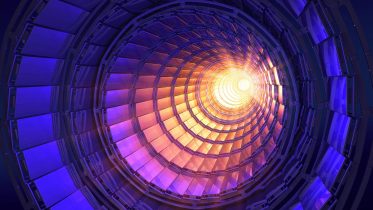Particle accelerators, critical in fields like medicine, manufacturing, and fundamental physics, are moving towards using muons, which promise smaller, cheaper setups capable of achieving higher energies. New experimental results show particles called muons can be corralled into beams suitable for high-energy collisions, paving the way for new physics. Advancements in muon technology may revolutionize particle accelerators, offering more compact and cost-effective alternatives to the large-scale colliders currently in use.
Recent experiments have demonstrated key technologies necessary for muon colliders, signaling a shift towards higher-energy, more efficient particle physics research. Particle accelerators are best known for colliding matter to probe its make-up, but they are also used for measuring the chemical structure of drugs, treating cancers, and manufacturing silicon microchips. Current accelerators use protons, electrons, and ions, but more powerful accelerators using muons – heavier cousins of electrons – have the potential to revolutionize the field.

Muon accelerators would be both cheaper and smaller, so could be built on the same sites as existing colliders while accessing even higher energies. Advancements in Muon Technology Now, a new analysis of a muon-beam experiment has demonstrated the success of one of the key technologies required for muon accelerators. This paves the way for a muon collider to be scaled up sooner than other types of accelerators us.
















